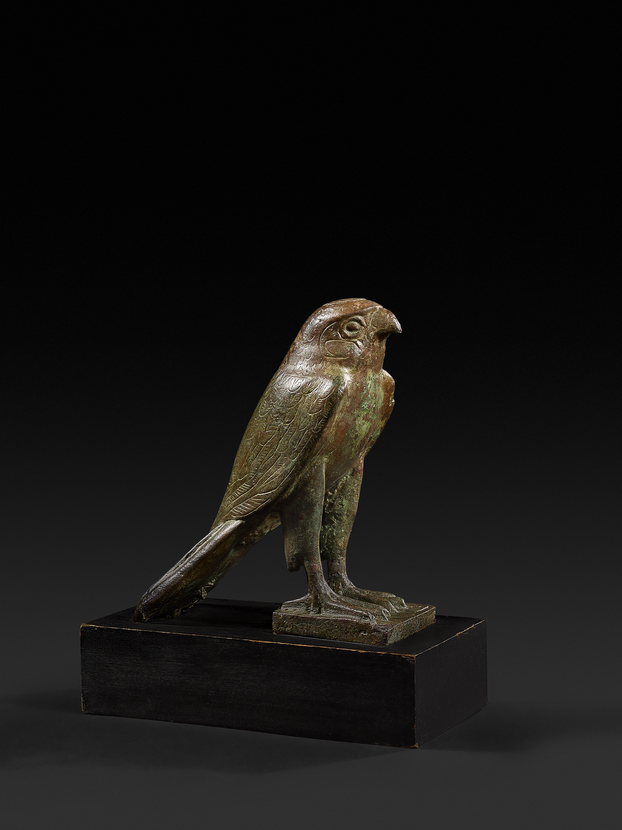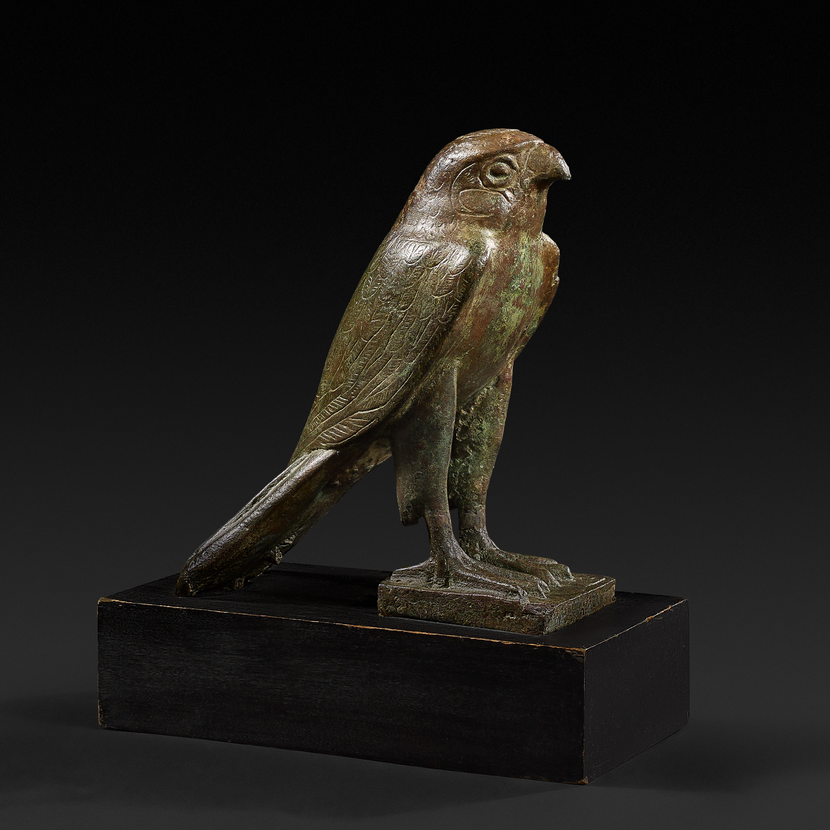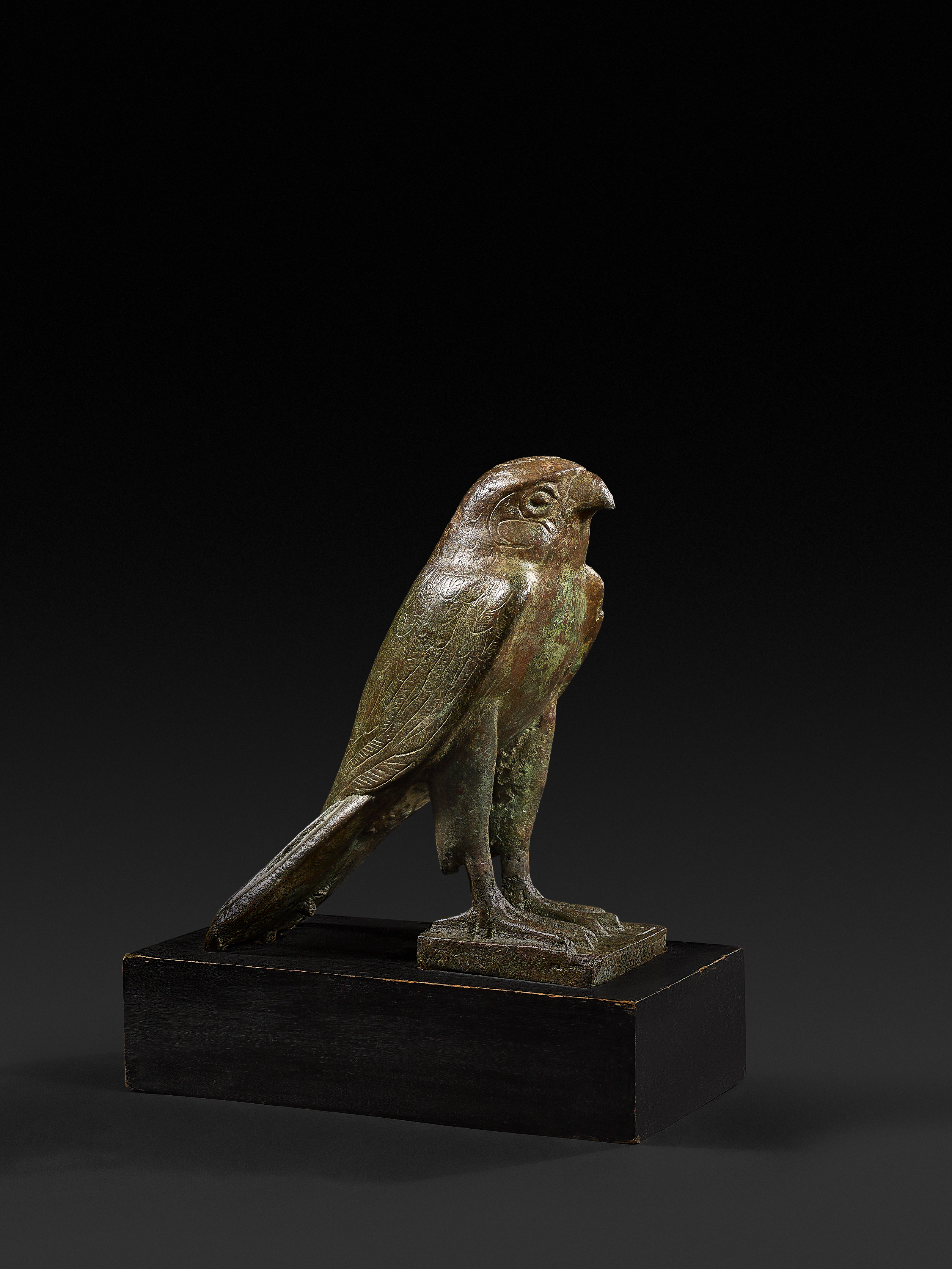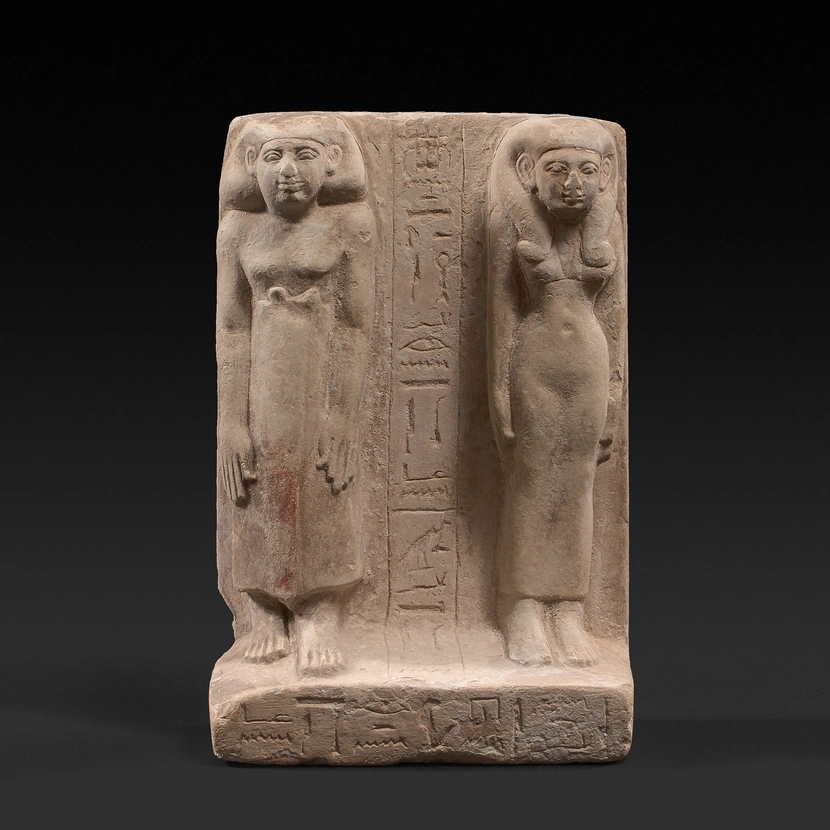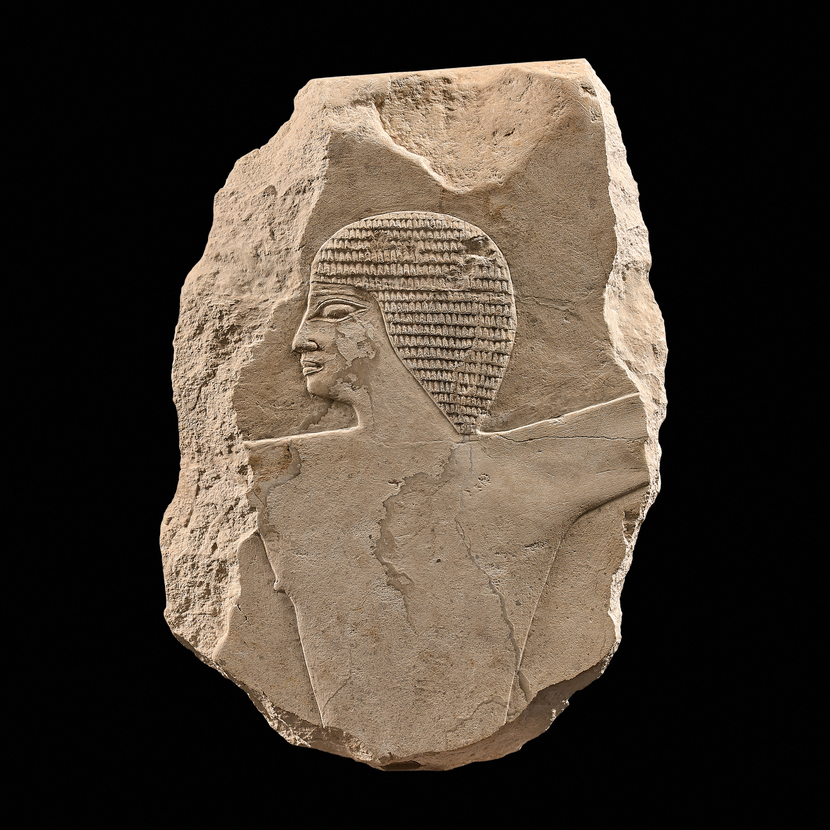Statuette of a Falcon
Naturalistic depicted falcon, standing upright with its tail feathers extending far behind, over which the wing tips are crossed right over left. The bird’s body is slender and elegant, emphasizing its grace and power.
Egypt
Late Dynastic Period , 664-332 BC
with green patina
Height 13 cm ( 5 1⁄8 in )
Former private collection Dina Ricanati, New York, USA
G. Hart: Ein Wörterbuch der ägyptischen Götter und Göttinnen, Routledge & Kegan Paul, London 1986
D. Redford: Die alten Götter sprechen, Oxford University Press, New York, NY 2002
Oriental Institute Museum: Between Heaven and Earth, Birds in Ancient Egypt, Publication 35, Chicago 2012
The falcon is depicted naturalistic manner, standing upright with its tail feathers extending far behind, over which the wing tips are crossed right over left. A crown was likely once attached to the falcon’s head. The wing feathers are rendered in fine relief, while head is delicately modelled with circular eyes, a pointed beak, and detailed internal markings characteristic of a falcon’s face. The bird’s body is slender and elegant, emphasizing its grace and power.
The falcon was closely associated with the sky, with its eyes symbolizing the sun and moon. Its great wings were thought to spread out to protect the earth below. Over time, the falcon became linked to the sun god Re, who was often depicted wearing a sun disk on his head, known as Re-Horakhty.
Like many animals connected to the divine realm, the falcon became a focus of mummification, burial, and votive offerings. Numerous bronze falcon statuettes depict the bird in an upright yet resting posture, with folded wings. These figures vary in size, from small ornaments to large, free-standing statues, many of which were hollow-cast with an interior compartment designed to hold an actual bird. Vast catacombs across Egypt contain hundreds of thousands of mummified falcons, attesting to their sacred status. The Greco-Roman temples at Philae and Edfu represent the final flourishing of this cult.
